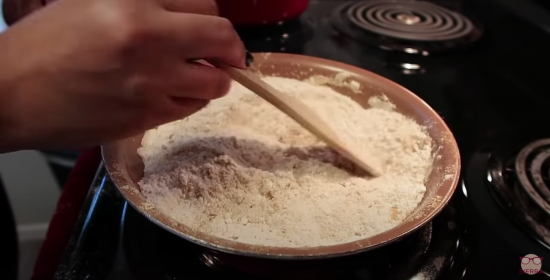
This unique coffee drink references the resilience of Navajo people.
BY MARK VAN STREEFKERK
BARISTA MAGAZINE ONLINE
Cover image courtesy of Sierra Johnson
One of the commendable things about specialty coffee is an enthusiasm for telling the stories of the many people and places that produce and consume it. At Barista Magazine, we love to celebrate these stories. For example, we think of stories about how cafés are persisting during COVID-19, or how companies are committing to social justice or raising funds for those in need. But coffee also tells just as many harrowing stories about the history of colonialism and imperialism. A while ago I came across Sierra Johnson’s YouTube video “A (Navajo) Coffee Type of Recipe,” and while I was intrigued by the unique coffee drink, the bitter history behind it was even more impactful. I reached out to Sierra Johnson via email and learned more about Navajo Coffee, and the story behind the recipe.
When asked how she likes to introduce herself, Sierra says:

Sierra is a daily coffee drinker, but remembering the drink her grandparents made inspired her to make this family recipe for a YouTube video. The process involves browning flour in a pan, then stirring it in by the spoonful into a cup of coffee until it reaches a desired thickness. Sugar is often added. The result is more like a coffee-pudding than a drink. “There isn’t an exact name for it but my grandparents called it ‘Ak’áán diniiltsoii ahwééh biih yih jaa,’ which translates to ‘toasted flour that you put in coffee,’” Sierra explains.
A similar, although very different, drink is the Mexican Champurrado, a chocolate-based atole. An atole is a hot beverage thickened with corn or masa flour.

Looking at the story behind Navajo Coffee reveals that coffee and wheat were not part of Indigenous foods before the settlers came. Settlers gave both of these items to Navajos as commodity foods in government camps during The Long Walk (Hwéeldi). Due to the language barrier, and the fact that these commodity foods were given by settlers without any instruction on how to use them, Natives experimented and came up with their own recipes. In the comments on Sierra’s video, Yazzie The Chef, a food justice activist, noted that frybread was another wheat-based survival recipe developed during this time.
“The Long Walk happened between 1864 and 1866, in which settlers forced thousands of Navajos to walk anywhere between 300 to 500 miles. Their homes were left burned, livestock killed and farms burned down. They were forced to leave their homeland, stripped of everything they had, in an effort to colonize, and force them to take on the White American values at that time,” Sierra says. “This all happened during the winter and cold months, therefore, needing a hot meal using the commodity foods that were forced upon them was how this type of survival food developed.”
Since the video, several other YouTubers have replicated the recipe, and Sierra made a Part Two where she experimented with using different flours and ingredients. Other Navajos have reached out to her, some saying they had another version of the recipe using ground white corn. “I still get comments today about how people have liked the coffee or plan on trying it,” she says.
Coffee is an excellent storyteller, and sometimes the painful stories are just as much a testament to resiliency and survival.

ABOUT THE AUTHOR
Mark Van Streefkerk is Barista Magazine’s social media content developer and a frequent contributor. He is also a freelance writer, social media manager, and novelist based out of Seattle. If Mark isn’t writing, he’s probably biking to his favorite vegan restaurant. Find out more on his website.
